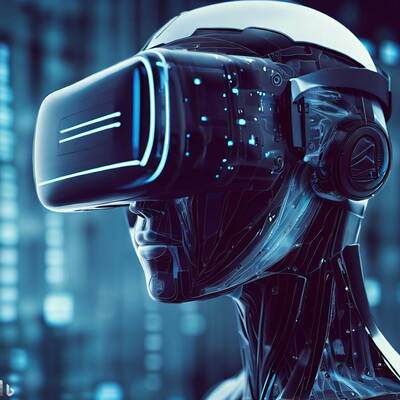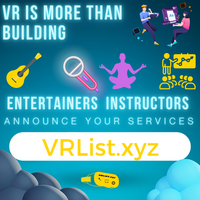
Imagine exploring the streets of Singapore in VR, with realistic graphics and sounds, and interacting with AI-powered Non-Player Characters (NPCs) that can converse with you. Or creating your own virtual world using your voice, thanks to AI tools that can generate 3D models and environments based on your verbal commands. These are some of the possibilities that artificial intelligence (AI) and extended reality (XR) can offer.
AI and XR are two of the most exciting and disruptive technologies of our time. They have both made significant progress in recent years, thanks to advances in fields such as machine learning, data science, and computing. AI enables machines to learn from data and perform tasks that normally require human intelligence, such as understanding natural language, recognizing faces, or generating content. XR encompasses various forms of immersive media, such as virtual reality (VR), augmented reality (AR), and mixed reality (MR), that create or enhance digital worlds that users can experience and interact with.
Digital Twin: Simulating reality with AI
The combination of AI and XR can create powerful synergies that can transform the entertainment and gaming industries, as well as other domains such as education, health care, tourism, and engineering. One of the most promising applications of AI+XR is the creation of digital twins, which are highly accurate simulations of real-world objects or locations that are updated in real time with data from sensors, cameras, or other sources. The digital twin is an extremely accurate simulation of real world objects or locations created by processing real time data. Vizzio previously announced that they have built a digital twin of Singapore using AI, which can be used for urban planning, disaster management, or virtual tourism.
Meta’s AI developments: Bringing AI assistants to life in VR
Another exciting application of AI+XR is the development of AI assistants that can interact with users in VR using natural language and gestures. Meta, one of the key players in the development of XR, is enthusiastically reimagining and advancing their AI infrastructure and the AI tools available to users. One of Meta’s AI projects, Project CAIRaoke, seeks to enhance the capabilities of AI assistants and change the way we converse with them. Meta’s VR platform, Horizon Worlds, will undoubtedly benefit from their AI R&D. An AI powered tool that will almost certainly be available in Horizon Worlds, sometime in the (hopefully not so distant) future, is Meta’s Builder Bot.
Empowering Creators and Small Businesses
As AI and XR continue to evolve and integrate, they will offer more opportunities and challenges for creators, consumers, and society at large. They will enable us to create immersive and engaging digital experiences that can simulate or surpass reality. They will also empower individual creators and small businesses to deliver high-quality content and services with less time and resources. VR freelancers with a service to offer the community can effectively and efficiently deliver their incredible services; as AI tools bridge the gaps caused by lack of expertise in specific areas. Like any tool AI and XR can also be dangerous when used maliciously or irresponsibly. At the end of the day, that is what this will be for creators, artists, entertainers, and proprietors in the XR space. A very powerful tool to utilize in pursuing their goals.
What are some AI+XR experiences and tools that you are most excited about? How do you think AI+XR synergy will affect our lives and the XR space in the future? Let us know on social media @vrlistxyz
FAQs
What is a digital twin?
A digital twin is a highly accurate simulation of a real-world object or location, created using data from sensors, cameras, or other sources. It is updated in real-time to reflect changes in the actual object or location.
How is AI used in virtual reality?
AI is used in virtual reality to create realistic and responsive non-player characters (NPCs), enhance the interactivity of the environment, and provide personalized experiences based on user behavior and preferences.
What are some applications of AI+XR in healthcare?
In healthcare, AI and XR can be used for pain management, physical therapy, mental health treatment, and personalized treatment plans. VR can provide immersive environments for therapy, while AI can analyze patient data and predict health issues.
How can AI and XR benefit education?
AI and XR can create interactive and engaging learning environments, such as virtual history lessons or training simulations. AI-powered teachers can answer questions and provide additional information, while XR provides immersive experiences.
What is Meta’s Project CAIRaoke?
Meta’s Project CAIRaoke is an AI project aimed at enhancing the capabilities of AI assistants to interact with users in virtual reality using natural language and gestures. It seeks to change how we converse with AI assistants in VR environments.
How can AI and XR improve urban planning?
AI and XR can improve urban planning by creating digital twins of cities to simulate different scenarios, such as traffic patterns and emergency response plans. These simulations help city planners make informed decisions and improve urban environments.




